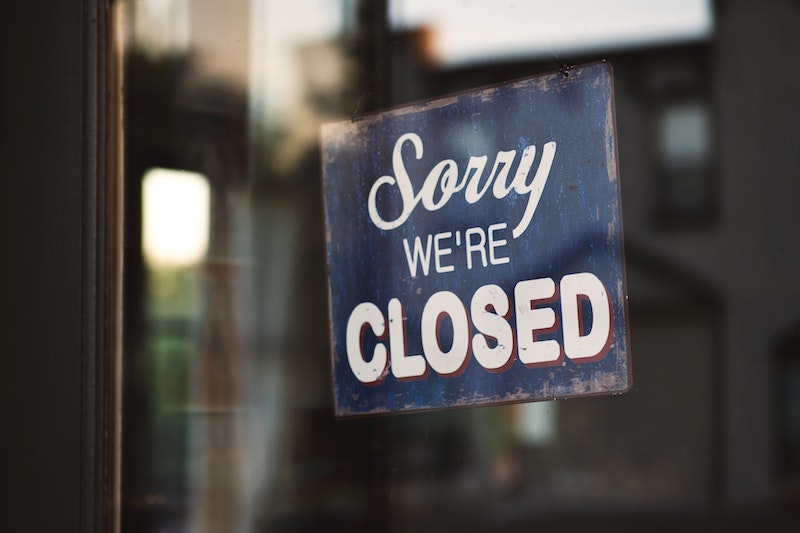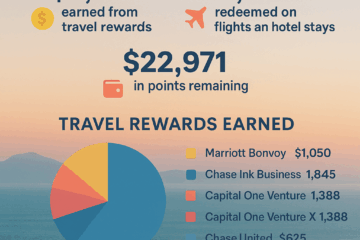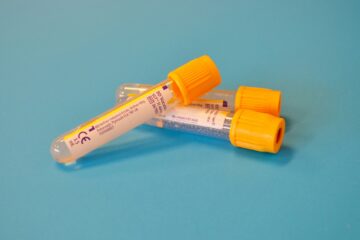First and foremost, we hope that everyone is staying safe, well and calm during these unusual times. Due to the pandemic, we decided to focus our content on information related to dealing with this uncertainty. To make this content easy to discover and access, make sure to bookmark our coronavirus page [link].
On our 14th day of home quarantine in Taipei (pictures) we received our daily phone call from the quarantine field agent that was closely monitoring us. Her call was a little bit longer than usual as she would usually check on our health and hang up after that. This time after doing her usual review, she told us that we were free to leave our Airbnb starting at midnight without any repercussions. In other words, we were free from our home quarantining (and also clear of COVID-19).
When we took our first steps outside of our building, we were really happy with the simple act of being able to walk in the same directions for more than a few seconds without hitting a wall. Stretching our legs felt great and feeling the warmth of the sun was a real treat!
What surprised us the most was what we actually did not notice. Rather than empty streets, we saw people walking next to each other carrying their cup of coffee and having regular conversations. Rather than empty public spaces, we saw people exercising in parks. Rather than limited public transportation, we saw busy buses and subways. Rather than people lining up to get groceries, we saw a bunch of people inside grocery stores doing their business as usual. And rather than looking for “Sorry we are closed” signs in front of businesses, we saw plenty of food stalls and restaurants accepting customers.

If it wasn’t for the surgical masks that everyone was wearing, we would have guessed that life here was exactly as we remembered it when we were in Bali a month ago, before COVID-19 became the pandemic the world has to deal with today.
It has been 2 weeks since we completed our quarantine so we wanted to share a little preview of how life in Taipei has been by looking at how Taiwan is doing extremely well to stay on top of this pandemic and what lessons the rest of the world can learn from it. Are you ready to take a peek at what life in one of the safest countries to be living during COVID-19 looks like?
If you go on the streets of Taipei and take a picture, you will see life as we used to know it before COVID-19. But the devil is actually in the details and we would like to highlight what the country is doing under the scene to keep everyone safe and healthy.
Here is an example with our trip to the farmers market on 4/12/2020:
Let’s also not forget that Taiwan was the 2nd highest risk country to get the coronavirus, yet the country manage to have the lowest rate of cases (& death) on the entire planet.

How Taiwan is staying on top of COVID-19
Here are the things we’ve noticed that are keeping Taiwan on top of this highly contagious virus and allowing its residents to keep living a pretty normal life.

1 – Wearing surgical masks
While people don’t wear surgical masks when they are inside their home, as long as you step outside everyone is wearing one. We noticed a few exceptions though:
- When you are eating out at a restaurant
- When you are exercising in a park
- When smoking outside
There are places where wearing a surgical mask is fully enforced though like in the subway. We do see agents posted at the entrance of each subway station with a sign of the rule and the fine (5000 NT$ / 165 USD) if you don’t follow it. We saw agents stopping people trying to get into the subway station without wearing a surgical mask.
2 – Washing hands
You are usually required to sanitize your hands upon entry to a restaurant and most stores (although we noticed that not all of them are enforcing this policy). Business owners will usually provide you with hand sanitizers to do so.
3 – Cleaning surfaces
Whether it is floors, windows, dining tables or even the place where you put your groceries when checking out at the cash register, people are cleaning surfaces like crazy and very often using products with at least 75% of alcohol (something they actually like to advertise as you enter a business).
4 – Checking temperature
It is very common to have someone stopping you at the entrance of a store to check on your temperature to be able to enter the store. Some places will also provide you a surgical mask if you don’t have one.
5 – Screening people at the border
People at the airport will get screened and ask to follow a two weeks quarantine. Their address and phone number will be taken so that they can be tracked and will be heavily fined if they don’t follow the rules.
6 – Implementing home isolation, home quarantine & self-health management
The government has implemented 3 methods of a 14 day quarantine as a response to COVID-19 that I summarized in the picture below:

The first, which the government calls “home isolation,” is used for individuals who have come in contact with confirmed cases of the virus. Those under home isolation will receive health checks from Taiwanese medical authorities twice daily and will be electronically monitored via their cell phones.
The second type, which the government calls “home quarantine,” will be applied to people who have recently traveled outside the country. According to the CECC, those under “home quarantine” will receive daily health-check calls from their ward chief, and will also be under electronic surveillance through their cell phones.
People who are clear from the two types of quarantine will move into “self-health management”. Under this method, individuals should take their temperatures twice a day, wear a surgical mask and minimize their time in public, and immediately report any possible symptoms to medical authorities.
7 – Educating the population
The local Central Epidemic Command Center (CECC) is running a pretty efficient campaign on TV and through ads on the street to educate the population about the basic rules to follow to live with COVID-19. If you are curious, here are a few videos that I was able to find in English that we’ve seen on TV:
- Practical support for people in home isolation/quarantine
- How to wash your hands
- Why hands washing beats hands sanitizer
- Tips for grocery shopping
- How to wear a surgical mask
- For more check the Central Epidemic Command Center (CECC) Youtube channel
8 – Following the rules
The Taiwanese are following the rules and while we’ve noticed a few news articles reporting individuals breaking the rules, they seem to be far from the majority. The Taiwan CDC issues regular updates and people will follow them as soon as they have been announced.
9 – Enforcing the rules
Besides the population being really good at staying informed and following the news, the local authorities are making sure that rules are being followed. We noticed this first hand during our home quarantine as we were tracked (through our phone) and checked upon daily to make sure we were staying inside our apartment and were still feeling well. We also heard stories of people getting heavily fined (like this guy – who went to exercise in a park and out to eat with his girlfriend, this guy – who went clubbing or even this couple). The local authorities aren’t joking with COVID-19!
10 – Practicing social distancing
While we are very familiar with physical distancing for having practiced it in the days leading to our trip to Taiwan, social distancing isn’t currently enforced in Taiwan, except for those not wearing face masks. This is part of Phase 1 of a policy about social distancing that Taiwan announced on April 1st (see below).
“In the first phase, the CECC will advise people to avoid going to events where they could come into close contact with others, such as exhibitions, sporting competitions, and concerts, as well as entertainment venues not essential to their livelihood. The CECC will further recommend that people keep a distance from others of at least 1.5 meters in indoor environments and 1 meter in outdoor ones. If all people gathering in a certain place wear face masks in the proper manner, these social distancing recommendations may be ignored. Nevertheless, people will be urged to wear face masks when in crowded and confined spaces. Proprietors of venues where there is a high likelihood of people coming into close contact with one another and where a distance of 1.5 meters between people cannot be effectively maintained should suspend operations”
CECC social distancing measures announced on 4/1/2020 – Extract (source)
Phase 2 will be similar to the social distancing that the USA and most European countries are currently following. As I am writing this, this phase hasn’t been triggered yet.
“In the second phase, which will commence if and when circumstances require, the CECC will institute mandatory rules. All nonessential events, particularly those of an entertainment nature, will be prohibited. For essential activities such as medical care, official duties, and work, social distancing of 1.5 meters indoors and 1 meter outdoors must be observed. Even if people correctly wear face masks, a distance of at least 1 meter must be maintained.
CECC social distancing measures announced on 4/1/2020 – Extract (source)
We noticed a few number ` of restaurants putting separations between tables to provide more isolation between parties but that’s pretty rare.
Since we are in Phase 1, it is still common to see people going on hikes with parties of 10-12 people. Actually, the CECC recommendation for gathering as of March 25th is currently set to 500 for outside events and 100 for indoor events.
“The Central Epidemic Command Center (CECC) recommended that indoor events that are attended by more than 100 people and outdoor gatherings that are attended by more than 500 people be suspended, in order to prevent cluster infections. […] organizers of these types of gatherings can conduct risk assessments based on the following six indicators […]: 1. ability to gain information on participants beforehand; 2. air ventilation and replacement; 3. distance between participants; 4. whether participants are in a fixed position; 5. event duration; 6. hand hygiene and surgical masks”
CECC Recommendation for gathering as of 3/25/2020 – Extract (source)
11 – Closely tracking active cases
The Taiwan CDC provides daily updates about the new cases and they go in great length to identify how many people have been infected, where they came from and where the infection might have been coming from. Pretty impressive and you can see on this example:
“With respect to Cases #222-225, the four patients studied abroad at the same education institution in the United Kingdom as Case #152. They were detected at the airport and reported to health agencies when entering Taiwan on March 22. Infection with COVID-19 was laboratory-confirmed in the cases on March 25. Related investigations suggest that it is a cluster infections on campus. Case #226 is a member of a travel group to Egypt. During the home isolation period, the patient had a dry throat on March 21, and health officials arranged medical care for the patient who was then tested for COVID-19. Infection with COVID-19 was laboratory-confirmed in the case on March 25. A total of ten individuals in the cluster involving the tour group have been diagnosed with COVID-19 (nine group members, one contact).”
Extract of one of the CESS daily press release about COVID-19 (source)
Bottom Line
We are grateful to be currently in Taipei and to be able to go on hikes, meet people at coffee shops or eat out at restaurants. We know that this can change from one week to the next so we are making the most of it now that we can. We are also hoping to plan some day trips to explore outside of the city.
Mrs. NN is checking the local Taiwan CDC website daily to check on the latest announcements and the latest active number of cases so we make sure we always follow the latest rules and know how the situation is evolving.
These measures make sense to us and we hope that other countries will be able to implement them as they have definitely proven their effectiveness.
What do you think about these measures? Would you feel comfortable going outside if the country would provide such measures with COVID-19 out there?




13 Comments
Skip · April 13, 2020 at 12:10 pm
Very interesting look into how Taiwan is handling things. Happy to hear you are able to get outside and experience things while you are there.
Mr. Nomad Numbers · April 14, 2020 at 4:55 am
Hi Skip. Yeah trying not to think about the situation on a daily basis is good for our mental health.
Dragon Guy · April 13, 2020 at 1:25 pm
Thanks for sharing your experiences. Dragon Gal has family there and we have heard how people mostly go about living their life and that everyone wears masks and goes through temperature checks. We’ve even commented that we would probably feel safer now in Taiwan than we would here in the US. (Of course we know we can’t get there now.) I think we need a lot of these things in the US but we’re probably just too big of a country to make them happen. Stay Safe!
Mr. Nomad Numbers · April 14, 2020 at 4:54 am
Thanks for stopping by. Always great to hear from you Dragon Guy! Taïwan being an island make it easier – in some way – to control the flux of people coming in. But to your point for a country as diverse and big as lthe USA – beside the obvious lack of equipment and infrastructure – there need to be a big coordinated effort between each state if people want to get this virus under contol in a timely manner. Because as people start to travel from one state to the next, if there is no strict policy and infrastructure in place, things can get out of control pretty quickly again… It might well take a very long time for this crisis to be over with worldwide unfortunately 🙁
Lisa · April 14, 2020 at 1:25 pm
Very interesting update! Great to hear how some countries are coping pretty well with good planning, testing & controls. I can only hope the US & Europe are learning from such examples.
Mr. Nomad Numbers · April 15, 2020 at 1:56 am
Thanks Lisa! Let’s hope for that. This is going to be a marathon (& not a sprint) and coordination will definitely be key to get out of this in a timely manner.
NurseFILife · April 14, 2020 at 5:48 pm
My initial thought on your article was that the main reason the US is as impacted as we are is that we don’t follow the rules. We’re more of an individualistic society, whereas most Asian countries are generally more collectivist. Even after people were warned to stay home except necessary things, and to practice social distancing/mask wearing there were still people not following these simple guidelines.
I’m sorry to say that this still applies to those in the medical profession. There is not a day that goes by in the cafeteria at work where I don’t see people clustered around a small table eating together. While this level of socialization is nice, it is definitely not helping the problem out. The hospital I’m at now has finally instituted mandatory mask use when a space of 6 feet cannot be maintained. That should help, but enforcement is the next issue.
This is definitely an interesting topic. It is useful to see how other countries are implementing health measures that effectively combat the spread of this disease. In the future I hope that we will apply this line of thought to other aspects of healthcare as well. The US healthcare system has much room for improvement, but health policy and a focus on disease prevention is going to be the thing that ultimately enables us to have better health with less expense.
Mr. Nomad Numbers · April 15, 2020 at 1:55 am
Hi NurseFILife. Interesting to know that it took the medical profession a while before enforcing social distancing. I’m actually not too surprise that enforcement is hard in the USA. It’s actually hard in most countries as people like to do what they want and think they know best how to take care of themselves.
Taïwan today reported 0 new cases for the first time since they got hit with their second wave of COVID-19 that arrived last month. This is great news and proof that the right measures can lead to great outcomes. Taiwan is however making it harder for people to come into the country and I’m wondering if the country/regions that will be the first to control this virus will make it difficult for foreigner to come back…
Clayton · May 5, 2020 at 1:22 am
If you have the opportunity in this situation you should take the high speed rail down to Kaoshiung. It has great hiking, night markets, and cultural sights
Mr. Nomad Numbers · May 5, 2020 at 1:51 am
Thank you Clayton. We are considering exploring the north and east side of the island in May (mainly via day trips from Taipei) and then look for a place to stay south to explore places down there. We will keep Kaoshiung in mind. Any particular hike you would recommend?
Clayton · May 5, 2020 at 2:14 am
That sounds great, I’m jealous and will have to live vicariously through you! A good hike close to Kaohsiung is
https://en.wikipedia.org/wiki/Shoushan_(Kaohsiung) 寿山 (高雄市)
If you are lucky you can see some Formosan rock macaques https://photos.app.goo.gl/StuBt8kVHNj4pFfu8
Also you can go to Fo Guang Shan buddhist monastery
https://photos.app.goo.gl/WCooHJ4RMAwXqPzc9
Have fun and stay healthy!
Mr. Nomad Numbers · May 5, 2020 at 2:47 am
Thank you!
Financials, Travel Planning, and Living in Taiwan with Mr. Nomad Numbers | The World Wanderers · February 15, 2021 at 7:12 pm
[…] What has Taiwan been like during the pandemic […]